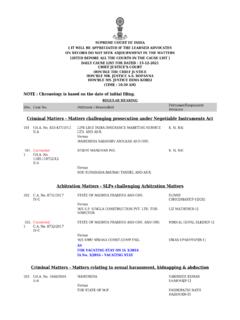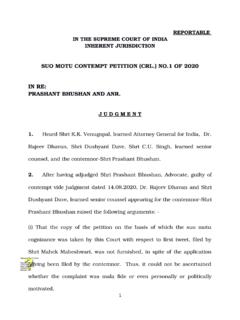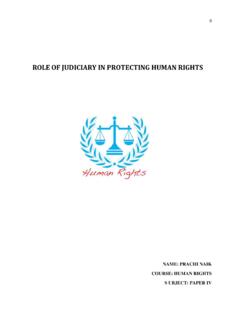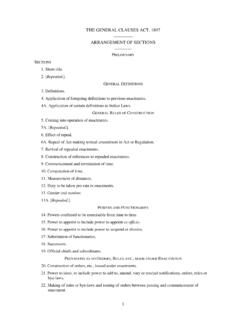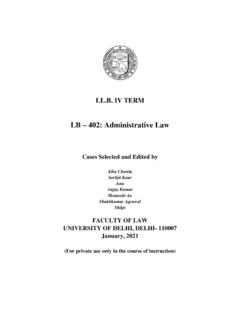Transcription of HEMANT GUPTA, J.
1 REPORTABLEIN THE SUPREME court OF INDIACIVIL APPELLATE JURISDICTIONCIVIL APPEAL NO. 1269 OF 2022(ARISING OUT OF SLP (CIVIL) NO. 20913 OF 2018)R. VALLI & (S)VERSUSTAMIL NADU STATE TRANSPORT CORPORATION (S)J U D G M E N THEMANT GUPTA, legal heirs of deceased V. Rajasekaran are in appeal hereinbeing aggrieved against an order passed by the high court ofJudicature at Madras dated granting a compensation ,12,628/- along with an interest @ from the date ofpetition till the date of realization on account of the death of thedeceased in a motor vehicle accident on deceased was riding a two-wheeler when a bus belonging tothe respondent dashed into his vehicle.
2 The deceased sufferedhead injuries and died instantly. He was born on andwas 54 years old on the date of accident. On the basis of incomeand age, the Motor Accident Claim Tribunal, Chennai1 awarded acompensation of ,82,628/-. Tribunal held that the accident occurred due to rash andnegligent driving of the bus driver. The appellant examined PW-3,the Assistant Manager of M/s Areva T & D India Limited. Hedeposed that the deceased was paid salary of , Thesalary certificate was produced as The learned Tribunalassessed the income at ,062/-. Further observing that theage of superannuation was 58 years, therefore, the dependencywas only for a period of 3 years.
3 After deducting income tax@10%, monthly income was assessed as ,756/-. The Tribunaldeducted 1/4th of the said amount towards personal expenses andawarded a compensation of ,60,412/- for the period thedeceased was to be in employment and thereafter applied amultiplier of 8 on 50% of the income which he would have earnedand awarded a sum of ,47,216/-. The Tribunal also awardedcompensation on the conventional heads and thus awarded a total1 For short, the Tribunal 2sum of ,82,628/-. high court affirmed the findings recorded by the learnedTribunal in respect of multiplier of 3 upto the date ofsuperannuation and thereafter multiplier of 8 keeping in view thedependency of life for 10 years.
4 The high court maintained theamount of compensation on account of dependency but enhancedthe compensation under the conventional heads, so as to award asum of ,12,628 counsel for the appellants argued that the multipliermethodology adopted by the Tribunal and affirmed by the HighCourt was erroneous and not sustainable. It was contended thatthe multiplier is applied keeping in view the age of deceased andincome at the time of death and not by considering the remainingyears of service. It was argued that if a person who dies in anaccident is 31 years of age and has 27 years of service left, themultiplier is not 28 years but keeping in view the judgment of thisCourt in Sarla Verma (Smt.)
5 & Ors. v. Delhi TransportCorporation & , the age of the deceased at the time ofdeath is the base for choosing a multiplier and not the years left inemployment. It was held as under: 42. We therefore hold that the multiplier to be used shouldbe as mentioned in Column (4) of the table above (preparedby applying Susamma Thomas [(1994) 2 SCC 176 : 19942 (2009) 6 SCC 1213 SCC (Cri) 335] , Trilok Chandra [(1996) 4 SCC 362]and Charlie [(2005) 10 SCC 720 : 2005 SCC (Cri) 1657] ),which starts with an operative multiplier of 18 (for the agegroups of 15 to 20 and 21 to 25 years), reduced by one unitfor every five years, that is M-17 for 26 to 30 years, M-16for 31 to 35 years, M-15 for 36 to 40 years, M-14 for 41 to45 years, and M-13 for 46 to 50 years, then reduced by twounits for every five years, that is, M-11 for 51 to 55 years,M-9 for 56 to 60 years, M-7 for 61 to 65 years and M-5 for66 to 70 years.
6 Judgment in Sarla Verma was affirmed in Reshma Kumari& Ors. v. Madan Mohan & Both the judgments wereaffirmed by the Constitution Bench of this court reported asNational Insurance Company Limited v. Pranay Sethi & This court in Pranay Sethi held as under: 44. At this stage, we must immediately say that insofar asthe aforesaid multiplicand/multiplier is concerned, it has tobe accepted on the basis of income established by the legalrepresentatives of the deceased. Future prospects are to beadded to the sum on the percentage basis and income means actual income less the tax paid.
7 The multiplier hasalready been fixed in Sarla Verma [Sarla Verma v. DTC,(2009) 6 SCC 121 : (2009) 2 SCC (Civ) 770 : (2009) 2 SCC(Cri) 1002] which has been approved in ReshmaKumari [Reshma Kumari v. Madan Mohan, (2013) 9 SCC 65 :(2013) 4 SCC (Civ) 191 : (2013) 3 SCC (Cri) 826] with whichwe While determining the income, an addition of 50% of3 (2013) 9 SCC 654 (2017) 16 SCC 6804actual salary to the income of the deceased towards futureprospects, where the deceased had a permanent job andwas below the age of 40 years, should be made. Theaddition should be 30%, if the age of the deceased wasbetween 40 to 50 years.
8 In case the deceased was betweenthe age of 50 to 60 years, the addition should be 15%.Actual salary should be read as actual salary less In case the deceased was self-employed or on a fixedsalary, an addition of 40% of the established income shouldbe the warrant where the deceased was below the age of40 years. An addition of 25% where the deceased wasbetween the age of 40 to 50 years and 10% where thedeceased was between the age of 50 to 60 years should beregarded as the necessary method of computation. Theestablished income means the income minus the The age of the deceased should be the basis forapplying the multiplier.
9 Pranay Sethi, this court held that the age of the deceased isthe basis for applying suitable multiplier and that thecompensation is to be determined keeping in view the futureprospects. The future prospects were held to 15% in respect of adeceased between the age of 50 to 60 Amit Anand Tiwari, learned Additional Advocate General hasreferred to certain orders of the high Courts reported as Uma5 Shankar & Ors. v. Revathy Vadivel & , Smt. KamleshDevi & Ors. v. Sh. Kitab Singh & and Union of India &Ors. v. Lakshmi Kumar & to support the applicabilityof split multiplier , multiplier upto the date of retirement andanother multiplier after retirement.
10 Judgments referred to by Mr. Tiwari are prior to theenunciation of law by this court in Pranay Sethi. Therefore, suchjudgments no longer can be said to be good law as suitablemultiplier is to be applied keeping in view the age of the deceasedin terms of para of the judgment in Pranay three-Judge Bench in an order reported as United IndiaInsurance Co. Ltd. v. Satinder Kaur alia Satwinder Kaur & has applied the multiplier keeping in view the age of thedeceased even if he was a bachelor. The court held as under: 48. Another three-judge bench in Royal Sundaram AllianceInsurance Co.
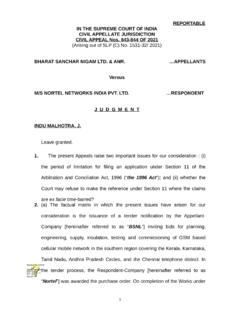
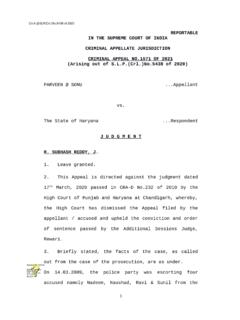
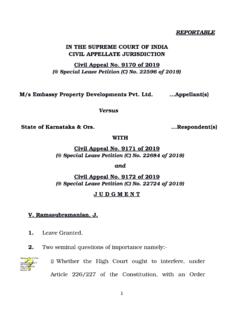
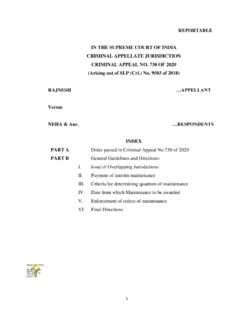
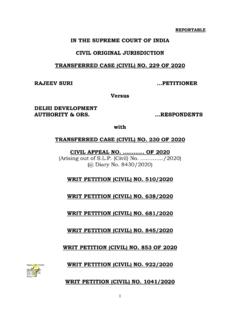
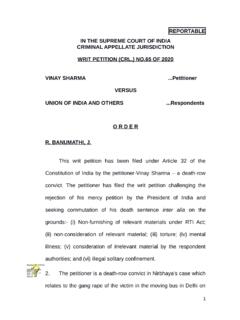
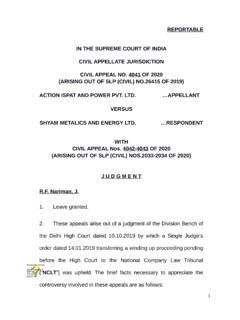
![[DEFAULT / OTHER MATTERS] [SERVICE/COMPLIANCE] …](/cache/preview/4/8/a/c/d/7/0/e/thumb-48acd70e206083f8f3d37421a64ec859.jpg)
